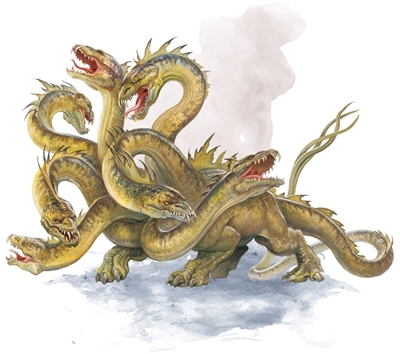 This week’s encounter is inspired by the hydra, a creature from classical mythology. Classical mythology is typically best known as Greco-Roman myth in the west, but it also includes the mythologies of the cultures that existed in the Mediterranean and Asia Minor in classical antiquity—a vast period of time stretching from the 8th century BCE to the 6th century AD. Such cultures and mythology include Egypt, Persia, Phoenicia, Carthage, and a number of others.
This week’s encounter is inspired by the hydra, a creature from classical mythology. Classical mythology is typically best known as Greco-Roman myth in the west, but it also includes the mythologies of the cultures that existed in the Mediterranean and Asia Minor in classical antiquity—a vast period of time stretching from the 8th century BCE to the 6th century AD. Such cultures and mythology include Egypt, Persia, Phoenicia, Carthage, and a number of others.
These encounters can be run as-is in a game set in a fantastical version of ancient Earth, or they can be adapted to fit the plane of Theros, described in the upcoming sourcebook Mythic Odysseys of Theros.
Hydras in Theros
Hydras are terrible beasts that plague the wild areas of Theros, as feared as dragons and krakens. Generally, the standard depiction of hydras in the Monster Manual is accurate enough for a game set in Theros, though there are other types of hydra beyond the “common” bog-dwelling hydra described in the Monster Manual. The only major difference in their lore is their origin story. Rather than being created from the blood of a dragon god slain by Tiamat, hydras are natural fauna of Theros. In many cases, they are servants of Nylea, god of nature, though many are also favored monsters of Pharika, god of affliction.
Hydras are often found roaming the edges of civilization at the top of their local food chains. They are a grave danger to farms and outlying settlements, but few risk upsetting the gods by destroying a monster from their flock. Only when people grow truly desperate do they seek heroes to help them defeat such a dangerous predator.
This encounter is a climactic combat that you can use either as a standalone boss battle, or you can create an adventure that culminates in this battle. Here’s one way that this adventure could go:
- A river that runs through farmland near the polis of Akros has recently dried up. A group of serfs who work the land have heard from a diviner that a vicious hydra has dammed the river’s source and taken up residence there. Priests of Pharika (god of affliction) and Nylea (god of nature) have been drawn to this gathering, and are oddly both in agreement. Though different in many respects, both priests vehemently urge adventurers who take this quest to spare the hydra’s life and simply urge it into another land away from the polis.
- The characters travel through the wilderness, harried by dire wolves and other Nyxborn beasts made mighty by Nylea’s power in order to protect the hydra.
- Once the characters reach the source of the river, they find trees uprooted and lodged in the river’s path, creating a deep pool of water with dozens of tiny rivulets pouring out of it. The surrounding landscape has been turned into a wetland by the fractured river. The characters must battle the hydra on its own turf in order to win. (This section is described in the encounter below.)
- If victorious, the characters return to the outskirts of Akros and receive a paltry reward scrounged together by the serfs of Akros—and perhaps a larger one from the priest of Nylea, if they solved the problem nonlethally. The priest may even recommend them to take on greater, better-paying work at the temple of Nylea in Akros.

Combat Encounter: Harrowing the Hydra
This combat encounter is suitable for a party of 8th-level characters. By replacing the hydra in this encounter with an ironscale hydra, a monster found in Mythic Odysseys of Theros, this encounter can be made suitable for a party of 12th-level characters.
Encounter Arena
This encounter takes place in a hydra’s watery lair. This particular hydra has torn down trees around a natural spring and dammed the mouth of a river fed by the spring. This has turned the spring into a murky lake with countless small rivulets turning the area around it into a lush and verdant fen.
Dimensions. The lake created by the hydra’s dam fills a roughly oval-shaped area about 120 feet long and 200 feet wide. The lake is about 60 feet deep and its deepest point, and has shallow banks that extend for about 5 feet from the shore until dropping off sharply. There are several Huge boulders at the bottom of the lake that creatures can use as cover if the battle reaches the lakebed. The source of the river is a cliff-side spring that tumbles down into the lake as a waterfall.
Dam. The mouth of the river is a roughly thirty-foot-wide channel, flanked on either side by two boulders. Now, the mouth of the river is found on the southern edge of the lake, dammed with stones, debris, and a dozen uprooted trees. This dam creates a roughly 30-foot-long bridge that connects the east side of the lake with the west. A character can’t effectively damage the dam from its edges, but can destabilize it by pushing the two flanking boulders out of position; pushing a boulder 5 feet requires a character to make a successful DC 20 Strength (Athletics) check as an action. If both boulders are moved at least 5 feet, the dam collapses and the river floods forth anew. The lake drains over the course of 2d10 hours.
Alternatively, a character can attack the dam while standing on top of it. The dam has AC 13 and 75 hit points, and is immune to poison and psychic damage. Whenever a character takes damage from an attack or spell while standing on this dam, they must succeed on a DC 15 Dexterity saving throw or slip off the slick logs and fall into the lake.
Once the dam breaks, any creature in the lake must succeed on a DC 20 Strength saving throw at the start of each of its turns or take 7 (2d6) bludgeoning damage be swept 120 feet to the south as the river returns to its normal course. A creature caught in the rushing river must repeat this save at the start of each of its turns, escaping on a success. The DC of this saving throw decreases by 2 at the start of each turn to a minimum of DC 10.
Hydra Behavior. The hydra typically dwells within its lake, hunting for fish while awake. It can hold its breath for up to an hour, after which time it surfaces, suns itself on the lake’s sunny shores, and then either tromps off into the surrounding fens to hunt, or returns to the water.
When the characters arrive at the hydra’s lair, it’s hunting for fish in its lake. Characters that make a successful DC 15 Wisdom (Perception) check can see its silhouette in the murky depths of the lake. Fighting a hydra underwater is no easy task, so they might seek ways to face it on land. Characters that make a successful DC 15 Intelligence (Nature) check recall hearing about how hydra’s can only hold their breath for an hour. They might use this information to plan an ambush for the creature when it surfaces for air.
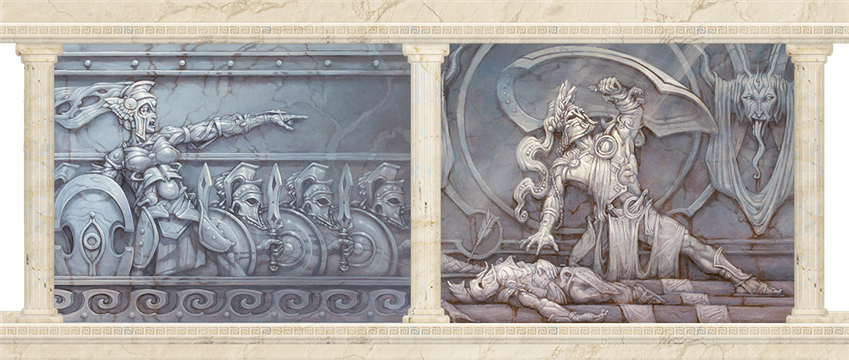
Hydra Tactics
The hydra knows that it’s safest from humanoids while in water. While in the murky water of the lake, it has three-quarters cover from attacks made outside the lake. Whenever possible, it attacks creatures on the shore of the lake with its bite attack (which has a 10-foot reach). If that’s impossible, it lumbers into the shallows and even onto the banks of the lake until it’s close enough to reach one of the characters. It then attacks that character with all of its heads before using its remaining movement to slip back into the water—hopefully without provoking opportunity attacks. It tries to goad characters into entering the water and fighting it there, where the hydra has a clear advantage in combat. If characters refuse to follow it into the water, it may try to grapple a heavily-armored character, though it only does this as a last resort.
The hydra fights to the death, unless it’s knocked out or otherwise incapacitated—by magical means or otherwise. For example, if the hydra if swept away when the dam breaks, it is flushed from its lair and goes on to seek new hunting grounds elsewhere once it manages to escape from the roaring river.
Note on Grappling. It’s important to note that when the hydra takes the Multiattack action, it can make a number of bite attacks equal to the number of heads it has—five, at the start of combat. However, when the hydra uses its action to attempt to grapple a creature, it does so instead of taking the Multiattack action. Because of this, it can only make one grapple attempt per turn.
Underwater Combat. Since the hydra has a swimming speed, it fights normally while underwater. Being underwater also makes the hydra resistant to fire damage—though taking any fire damage at all still prevents its Multiple Heads trait from allowing it to grow new heads.
Treasure
As a beast of instinct, the hydra has no interest in gathering treasure. However, characters that spend 10 minutes searching the bottom of the lake can make a DC 15 Intelligence (Investigation) check. On a success, they find a folding boat and a poorly-sealed clay pot containing 10 light-blue marbles. These marbles are dust of dryness that have absorbed water.
For more adventures in a mythical setting inspired by Greek mythology, order Mythic Odysseys of Theros on the D&D Beyond Marketplace, available now!
Create A Brand-New Adventurer Acquire New Powers and Adventures Browse All Your D&D Content
Did you like this encounter? Check out the encounters in the Encounter of the Week series. You can also pick up the adventures I've written on the DMs Guild, such as The Temple of Shattered Minds, a suspenseful eldritch mystery with a mind flayer villain. My most recent adventures are included in the Platinum Bestseller Encounters in Avernus, a collection of over 60 unique encounters created by the Guild Adepts, which can be used to enhance your campaign in Avernus or elsewhere in the Nine Hells. Also check out the Platinum Bestseller Tactical Maps: Adventure Atlas, a collection of 88 unique encounters created by the Guild Adepts, which can be paired with the beautiful poster battlemaps in Tactical Maps Reincarnated.
 James Haeck is the lead writer for D&D Beyond, the co-author of Waterdeep: Dragon Heist, Baldur's Gate: Descent into Avernus, and the Critical Role Explorer's Guide to Wildemount, a member of the Guild Adepts, and a freelance writer for Wizards of the Coast, the D&D Adventurers League, and other RPG companies. He lives in Seattle, Washington with his fiancée Hannah and their animal companions Mei and Marzipan. You can find him wasting time on Twitter at @jamesjhaeck.
James Haeck is the lead writer for D&D Beyond, the co-author of Waterdeep: Dragon Heist, Baldur's Gate: Descent into Avernus, and the Critical Role Explorer's Guide to Wildemount, a member of the Guild Adepts, and a freelance writer for Wizards of the Coast, the D&D Adventurers League, and other RPG companies. He lives in Seattle, Washington with his fiancée Hannah and their animal companions Mei and Marzipan. You can find him wasting time on Twitter at @jamesjhaeck.
Learn more about Mythic Odysseys of Theros in this interview with designer James Wyatt!








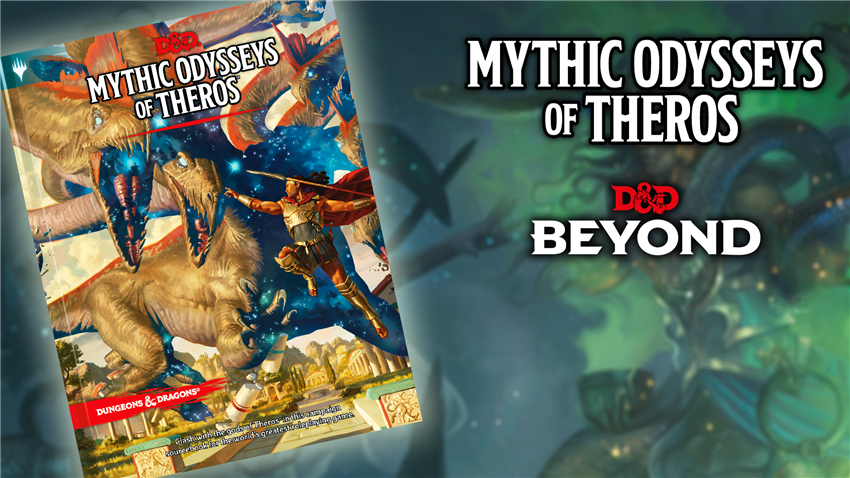
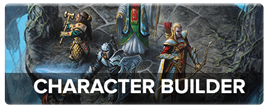
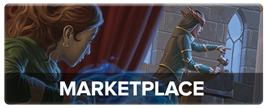
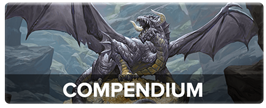
-
View User Profile
-
Send Message
Posted Sep 1, 2020Ran this encounter last week with my group (6 players with lvl 7). I highly amped up the hydras stats to CR 14 Monster, gave the area around the lake difficult terrain and a poisonous fog (DC 16 Const Save at start of players turn, take 2d6 poison damage on a failed save), made the water poisonous, and did some ploot-hook adjustments to fit it into my campaign.
If you're interested in the adjustments I did for the hydra:
- Change the size to Gargantuan
- Base Statblock of the Ironscale Hydra, but more healing on regrown heads
- Acidic Blood: 2d8 acid damage to all players 5 feet from it if the hydra takes slashing/piercing damage
- Poisonous Bites: Adding to the normal damage, force a DC 16 Const Save: On a Fail, take 2d4 poison damage and be poisoned until the end of your next turn.
- Gunk Shot: Ranged Weapon Attack +10 (30/120ft), 3d8 poison damage, DC 16 Dex Save or be blinded until the end of your next turn.
It was a very close and interesting fight with many chances of a PC-death. Would have been deadly if I hadn't warned them with 'the fish from the river (or what's left of it) are poisonous to eat' and 'It seems to be the runaway pet-hydra X of the black dragon Y. The dragon loves to feast on the hydra's heads and will most definitely seek revenge if it is killed'. After those warnings, they prepared loads against poison and acid damage and effects. This, some luck and a good fight-strategy clearly saved them their lives.
TLDR: Thanks for the encounter, was loads of fun to run with my group =)
-
View User Profile
-
Send Message
Posted Dec 11, 2020I'm looking at running this encounter for a group, but I just had this thought: how do you explain the hydra regrowing heads if none of the characters deal slashing (or lightning, which other monsters consider slicing as seen in oozes) damage? Or, what if the players specifically avoid attacking the heads? Also, just wanted to compliment James again on this article: truly one of the greater EotW adventures. I miss this series!
-
View User Profile
-
Send Message
Posted Dec 11, 2020The rules don't require slashing/lightning damage only that a certain damage threshold is met. If players try to avoid attacking the heads I would narrate the hydra "blocking" the attack with one of its heads, like it knows that it that can grow more. I know the classic image of a hydra fight involves a lot of head chopping but there's no reason that it can't have some limp, dead heads from bashing or whatever. Basically the body recognises that the head is dead and biologically/magically grows more.
-
View User Profile
-
Send Message
Posted Dec 16, 2020Make it a Pyrohydra. They breath fire.
-
View User Profile
-
Send Message
Posted Apr 7, 2022Loved it! Changed the Hydra for a Dracohydra and really gave my player a run for their money!